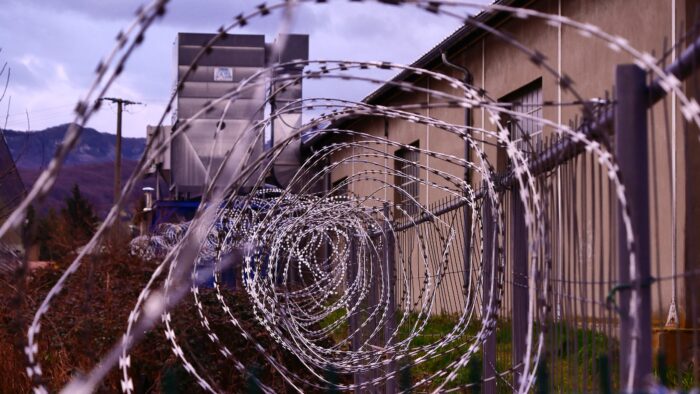Current law enforcement needs are resulting in an abundance of contracting opportunities
Almost every correctional facility in America is old, inefficient, costly to operate and overcrowded. Very few have adequate space for education and rehabilitation services and almost none have critical care space for healthcare and mental health services.
The U.S. Bureau of Prisons operates 122 prisons, and 31 percent are over half a century old. According to a recent report from the Department of Justice, cost projections to meet federal prison repair needs are approximately $2 billion. There is a current pending request for funding of $178 million in 2024 to renovate and repair prisons with the most critical needs.
Additionally, there are over 1,000 correctional facilities operated by states that require urgent attention. The majority are old, in late stages of structural deterioration, and extremely costly to operate. Of greater concern, however, is the issue of security. There has been little attention to modernization in decades for most prisons. An immediate concern for these facilities is their overcrowding and the resulting lack of space for providing adequate healthcare, particularly in addressing the mental, behavioral, and emotional needs of inmates. Many prisons have either limited or no air-conditioning at all and that makes it extremely difficult to hire people to help operate the facilities.
The federal government helps fund prison construction and renovation projects through grant programs, but the amount of support is limited so state officials often appropriate funding. Most of the federal funding is distributed to states based on the size of their prison population and recent crime statistics. Occasionally, there are amounts of leftover state funds that trickle down to local officials in need also of funding assistance. Those funds are allocated based on similar criteria, and as a result, many local governments find funding through local bond elections.
Funding has been inadequate for the country’s prisons for decades but due to the current dire needs and the high cost of operating aging correctional facilities, more funds are now more available than before. There will be hundreds of new construction and renovation projects of prison facilities in 2024. Examples include:
Several years ago, the Wisconsin legislature passed a law that proposed a plan to reform the state’s juvenile corrections system. This was in response to very poor conditions at incarceration centers for young offenders. State officials were directed to construct a new facility for juveniles convicted of serious and violent crimes to separate them from other youth. Those who committed more serious crimes among the detainees were to be transferred to a pre-existing juvenile treatment center, while several new, smaller youth detention facilities were to be constructed or renovated. The objective was to get the young offenders closer to their homes as they were detained. One of the new, smaller facilities is now ready to be constructed in Milwaukee County. The construction project is projected to cost approximately $78 million. A site has been selected, and the design phase has started. Construction will commence soon, and it is anticipated that the building will be finished and available for use by the spring of 2026.
The Wisconsin Department of Corrections will oversee the project. Components of the project include the 72,000-square-foot building and a 16-foot-tall wall to enclose an outdoor area. Because of the importance of education, classrooms and a computer learning lab will be designed for vocational training.

A new $366 million prison will be built in Lincoln, Nebraska. Currently in the design phase, this construction project is scheduled to launch in the fall of 2024. State officials will replace the current Nebraska State Penitentiary because the aging facility is insufficient, costly to maintain and it continues to suffer from water main breaks. To accommodate the state’s prison population, a new 1,500-bed facility will be built on a 305-acre site. The design will outline space for rehabilitation programming and education classrooms to help inmates reintegrate into society. Other components of the project include the addition of trees and landscaping.
A $50 million construction project for a new juvenile center is currently in the design phase in Minnehaha County, South Dakota. A new Juvenile Justice Center will replace the current aging juvenile detention center which was built in the 1960s and has had little renovation since then. The plan is to build a facility which will support rehabilitation efforts for young offenders. It will provide a 72,000 square foot facility with 64 beds. The building will be divided into small sections for groups of eight rooms with an emphasis on areas for education spaces. The new facility will be located on property near the old detention center.
Officials in Spokane, WA will ask voters to support a bond package in November that will provide funding for a new $300 million jail project. The new jail facility is needed to accommodate the city’s growing prisoner population. Currently, the old county jail, which was designed for 462 inmates, now houses 872 detainees. In addition to providing more space for inmates, the new facility will also be designed to allow space to implement mental health and rehabilitative services.
Numerous opportunities are available for contracting firms in the construction and renovation industry. However, it’s worth noting that the law enforcement sector also presents many opportunities for these firms. Hundreds of cities are constructing law enforcement complexes where police, fire, EMS, and other first responders are located These facilities are highly sought after because of economies of scale, lower costs, and increased efficiencies.

As President and CEO of Strategic Partnerships, Inc., Mary Scott Nabers has decades of experience working in the public-private sector. A well-recognized expert in the P3 and government contracting fields, she is often asked to share her industry insights with top publications and through professional speaking engagements. Get an exclusive look at upcoming trends and insider tips from Mary herself on the SPI blog.
Tags: Construction, contract opportunities, correctional facility, Counties, Department of Justice, development, DOJ, government contract, Infrastructure, juvenile corrections system, Mary Scott Nabers, Mental Health, Milwaukee, Prison, prison system, Public Safety, Public-Private Partnerships, SPI, U.S. Bureau of Prisons, US Prisons






 RSS Feed
RSS Feed